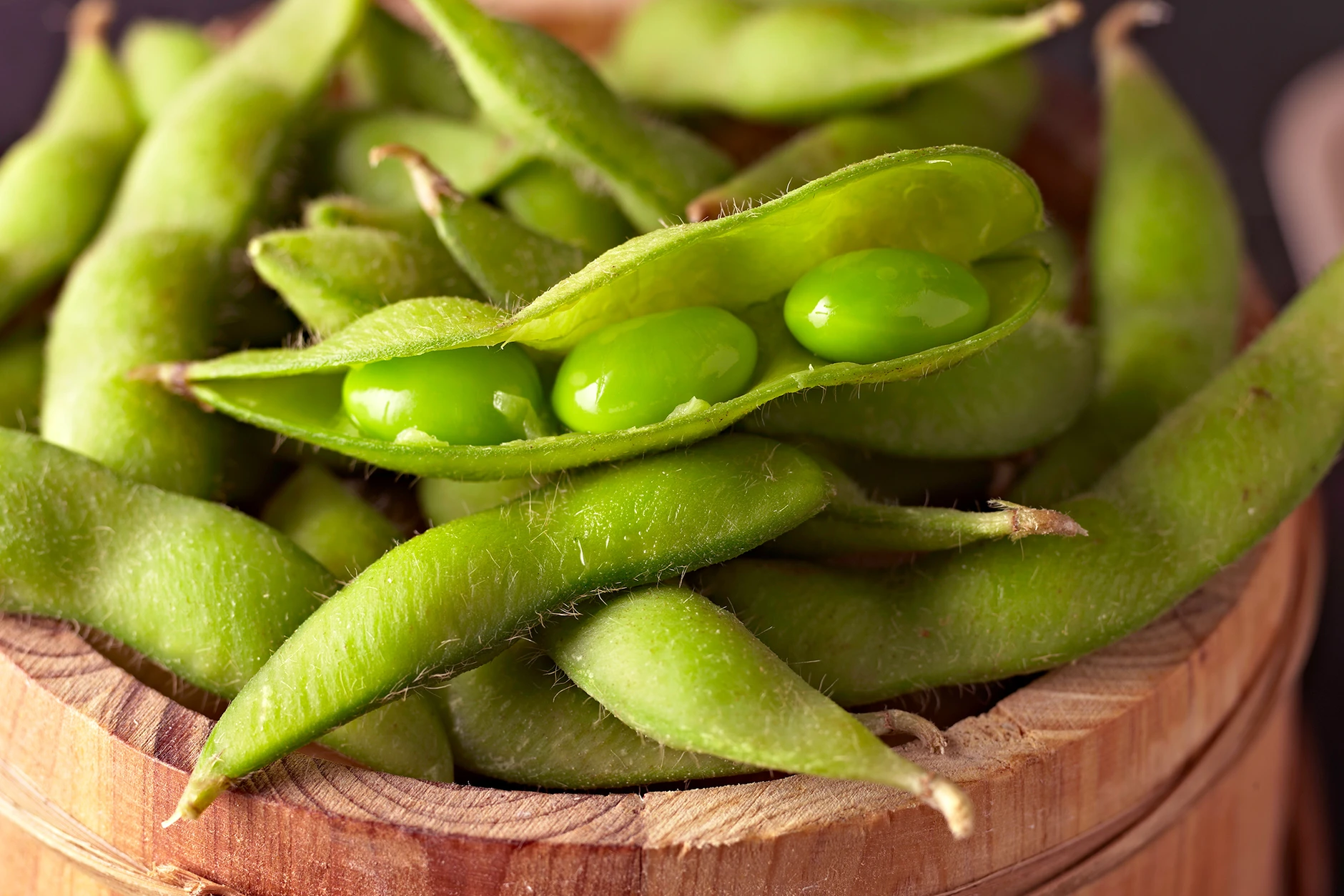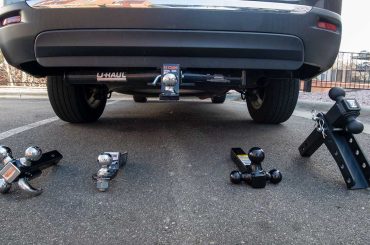Table of Contents
Phaseolus vulgaris, which are green and unripened fruit of the common bean. They are different from their other related species; the seed is enclosed inside the pods. Green beans, also French beans, consist of around 90% water, 7% carbohydrate, 2%protein and are enriched with Vitamin B, C, and K.
The major type of green beans harvested in the UK is climbers. At the same time, another type can also be harvested.
Bush green beans can grow without any support and give fruit in a very short interval of time; however, they restrict their fruit production very early. But, if you grow climbers, they need a pole for the growth but produce fruit for a longer interval than the bush green beans. On a commercial scale, bush green beans are used because they require less space and time.
While growing green beans, it is important to know when to pick green beans and the care tips for good yield.
How to Grow Green Beans?
1. Choosing the Right Seed
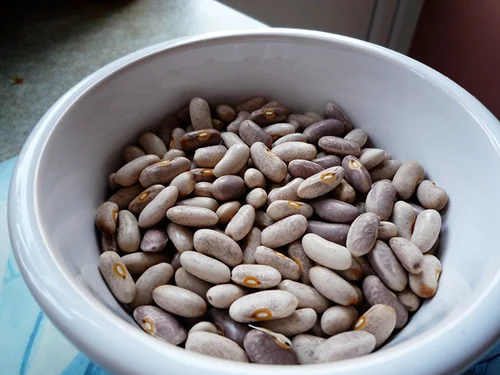
Green beans or French beans require moist soil and sunlight for better growth. You can choose the seed based on the area you are thinking of planting. If you are thinking of growing the beans in the pot, then go for the Dwarf Types- Dior, Amethyst (it is purple color beans that are mostly used as a salad or as food decorative), or Climber Type- Cobra, Blue Lake.
This step mainly depends on the area and the harvests you are considering. If you have less area, the bush is perfect because they mature early, whereas if you need more yield and have area and time, then go to the Climbers. They are a good option because climbers give a longer harvest.
2. Finding The Right Spot For Green Beans
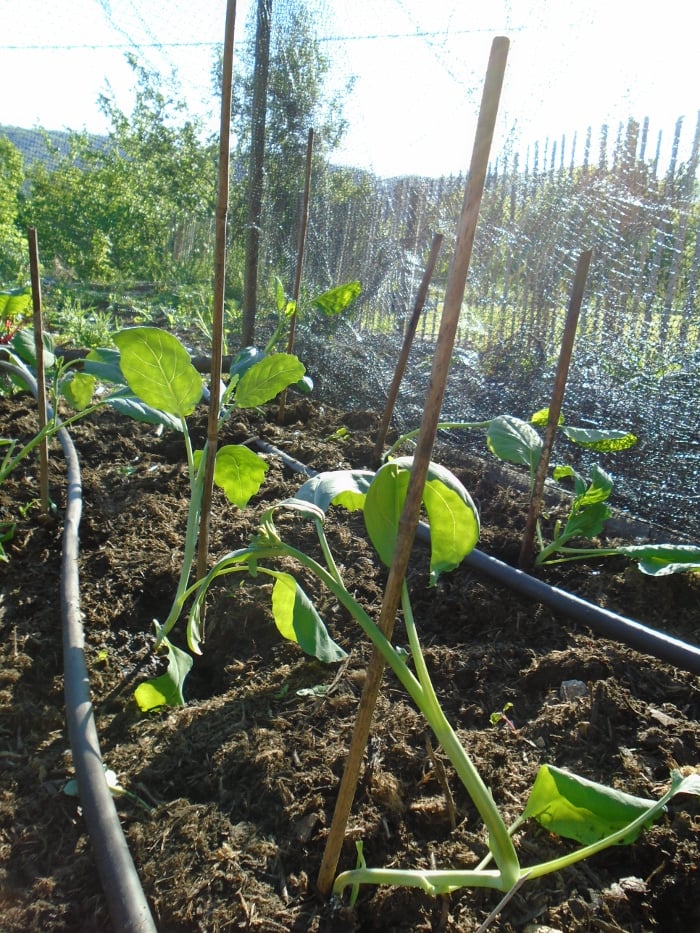
Green beans require warm and moist soil for proper growth. When you have decided on the seed and prepared the soil and manure, then make sure to arrange the pots in a location where they can get sunlight and ventilation. If there is a chance of frosting them make sure to place the pot inside.
3. Preparation of Soil for Sowing Seeds
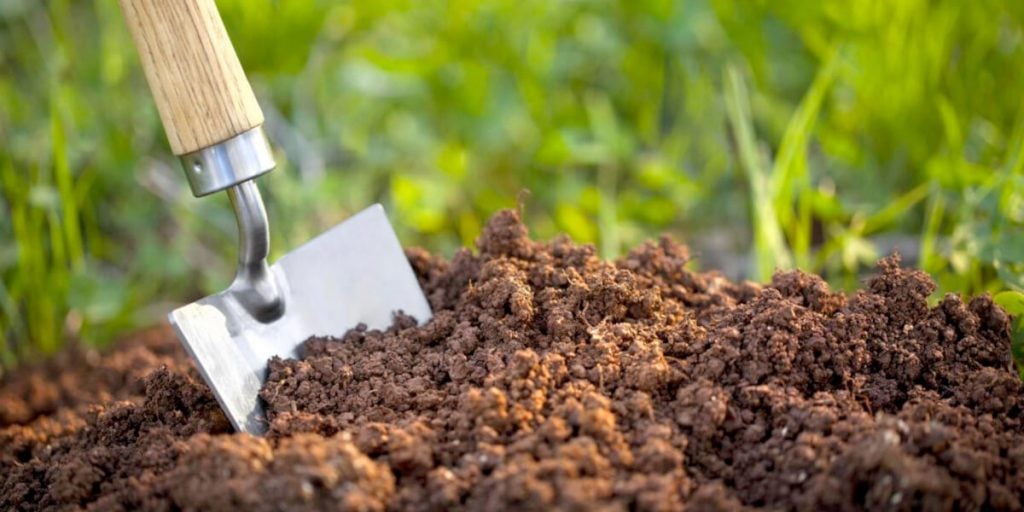
- Both seed options require good soil and a reliable pot for optimal growth.
- For Bush green beans, use a durable pot for Climber green beans, use a Recycle pot.
- Place the seeds in the garden area after selecting the appropriate pot.
- To prepare the soil, choose between manure or Garden Compost to improve water retention.
- Prepare the soil 7-10 days before sowing for proper mixing and soil settlement and to create a fertile soil mixture and activate microorganisms.
- Hobby and professional gardeners: Sowing of small seedings and grains in biodegradable pots
- Fibre pot: Grow herbs and small plants in the balcony, terrace or garden
- Set: 80 Round flower pots made of paper fibre - H x D: app. 8 x 7.5 cm - For DIY garden projects
4. Green Bean Sowing Technique
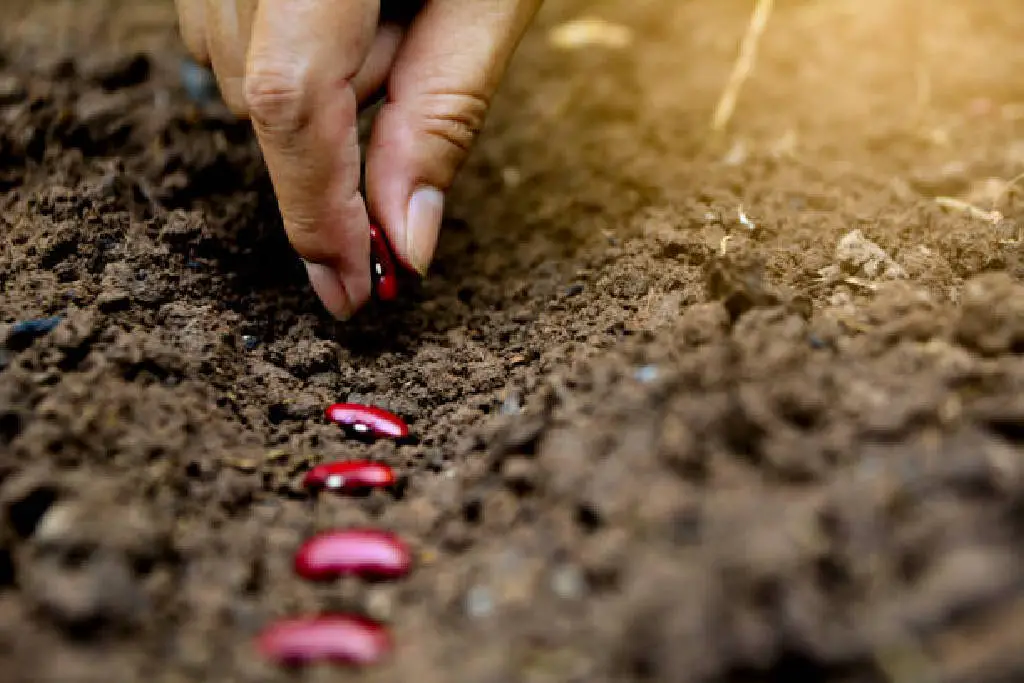
Take the pots and fill them with the soil you have prepared. Don’t fill the pot up to the brim. Make sure to leave the 3/4th pot empty for ventilation and water.
Fill the pots one week before sowing, keep the pot in sunlight, and water the soil once a day. Green beans love warm soil; therefore, after a week, make a hole around 5cm and sow the seeds. While sowing the seed of the bush green beans, place them near each other, whereas for the climber green beans, keep a distance of around 30cm. This way, they will get adequate space to breathe and grow.
5. When Will the Seed Germinate?
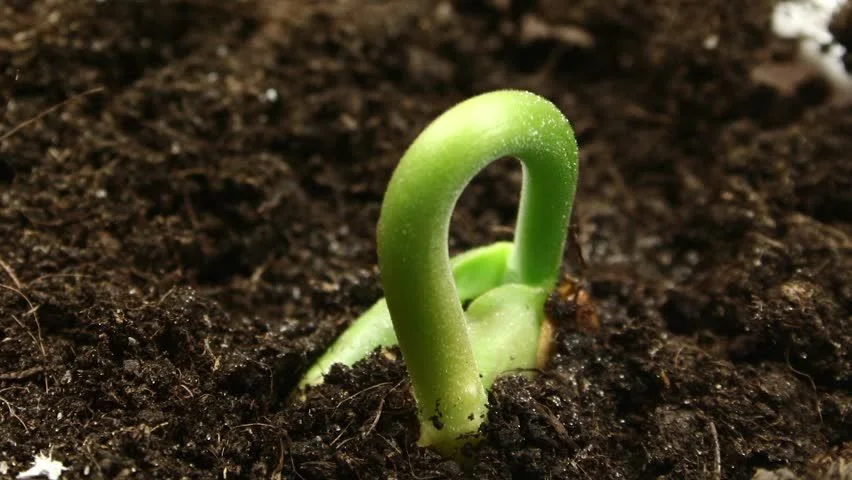
You have sowed the seed in the pot now; you have to wait till the seed germinates. It takes 20 days to germinate the seed. Till that time, make sure to water the plants regularly before sunrise, and if you don’t have time in the morning, then water them after sunset. In the sun, plants require more water, and thus, you have to water them twice in the sun.
Sowing seeds in the pot has one advantage, you can place them inside where sunlight is available and the place is properly ventilated.
6. Supporting Green Beans
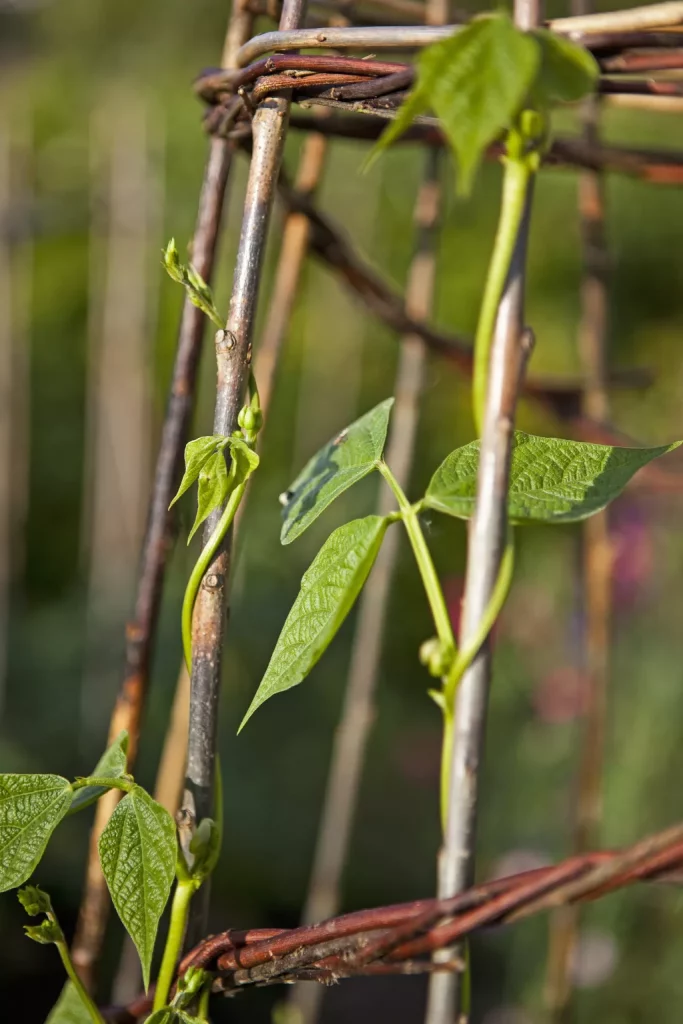
This step is mandatory for the Climber green beans because bush green beans can support themselves.
Traditionally supports are placed before the sowing of the pants. But you can do as you prefer. While putting the support, make sure to plant them at a distance.
Supports are planted with bamboo wood in two parallel lines. Shape them into a hut shape and tangle up their little stems on the bamboo. This will help them in growing along the bamboo stems. This structure is convenient while harvesting the green beans and also looks pretty like a little canopy in your garden.
How To Plant Them In Garden?
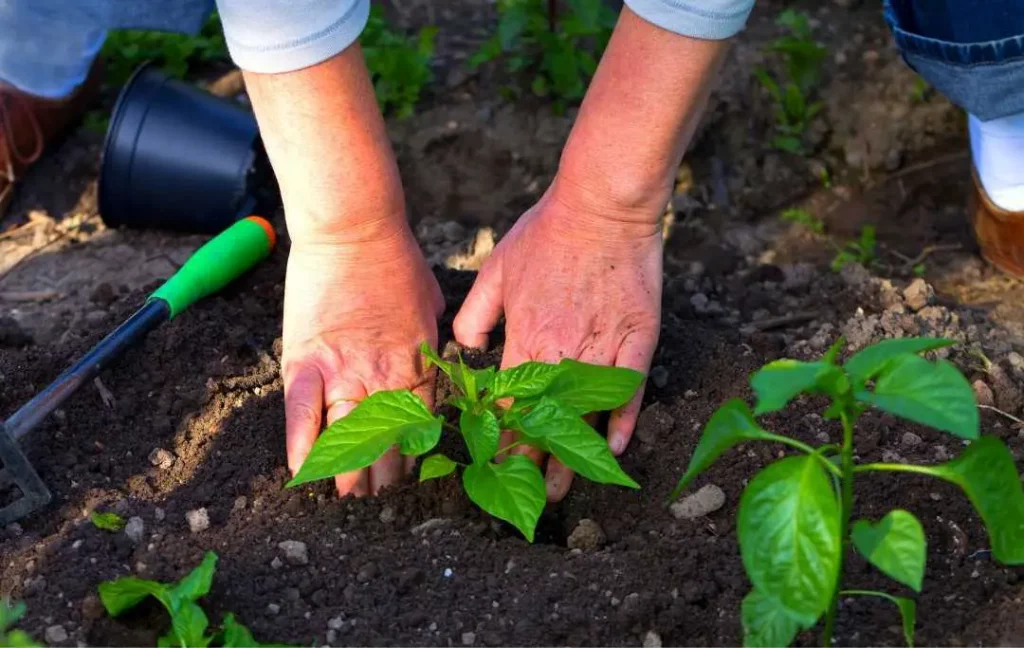
You have selected a spot for your green beans. We have mentioned earlier that replanting the Climber green beans is mandatory as they need space, whereas, for bush green beans, you can use the large pots. After growing them in the small pots, you can replace them in the big pots.
For Bush green beans, plant them close to each other as they support each other while growing. Whereas, for Climber, green beans should be planted by keeping an appropriate distance between them. If you use Recycle pots, you don’t even need to remove the whole plant from the pot. Just place the pot directly in the hole, and you are done.
What Kind of Compost is Required for Better Yield?
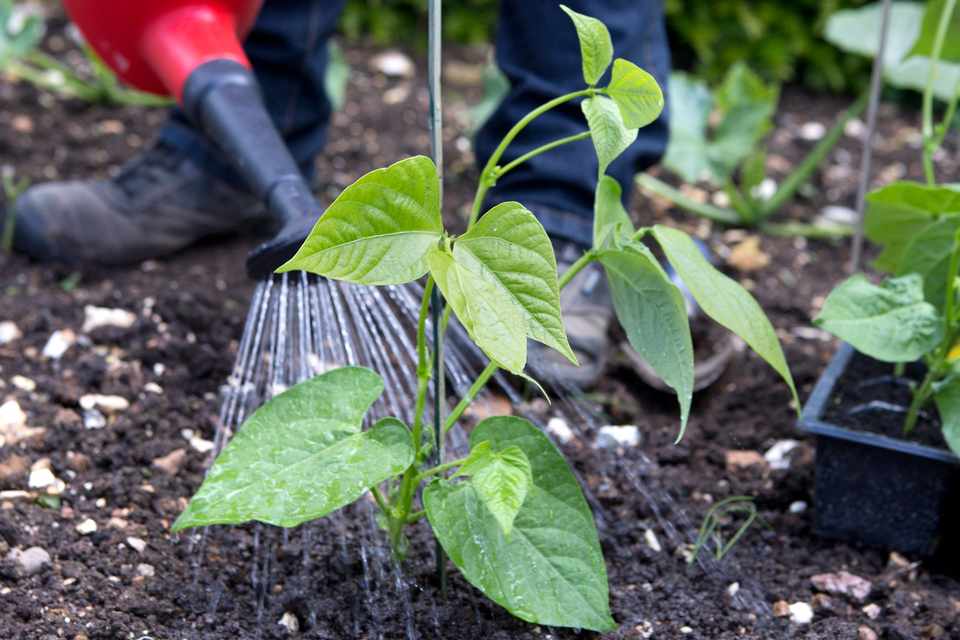
Now you have sown your seeds in the right place. But, before they give your green beans, they will grow and mature. After a while, climbers will make a covering over your bamboo supports, and for bushes, you will see a tangled structure.
Don’t forget to add manure and mushroom compost to the soil. This will help in the better growth of the green beans.
Is Pruning Required for Green Beans?
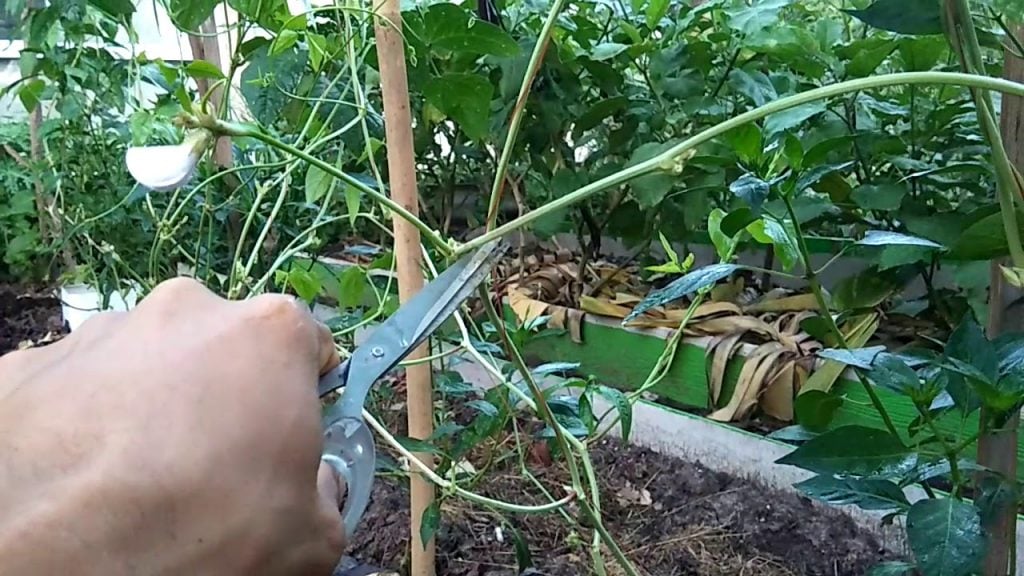
Pruning is the method that is mostly used to keep your plant in shape. For your green beans, make sure to prune your plant. When your plant branches increase from the bamboo sticks, cut them off. Suppose there’s any branch that is not tangled on the wood and is growing outward. Tie them up with the threads. This way, you can maintain the shape and also the growth of the plant.
You have finally grown your green beans. Green beans can enrich your food with nutrients and also become a great companion if you are on a diet. But now, the question arises about the harvest of green beans.
When to Pick Green Beans?
Three phases are observed before picking the green beans, and many people get confused about this. Therefore, When to pick green beans is an important question that arises in everyone’s mind. Before harvesting green beans, there are three phases, all are mentioned below.
1. Flower Production
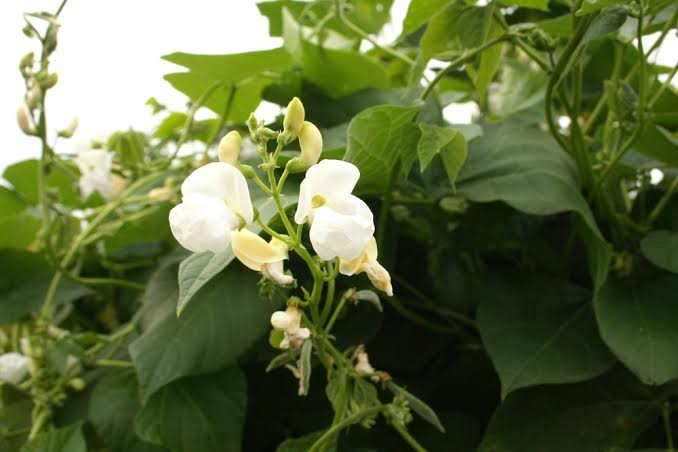
You will observe that white flowers are borne on the green beans. In Climbers, these flowers are seen after one or two months, whereas bush green beans will show flowers in 4-6 weeks.
When you see flowers, it means the plant is looking for pollination. In climbers, pollination takes time as compared to bush green beans. When the flowers mature, white flowers turn yellow and later turn into green pods. The green pods are produced only when fertilization is successful. In case the flower doesn’t mature, then the green pod is not formed.
2. Premature Green Bean
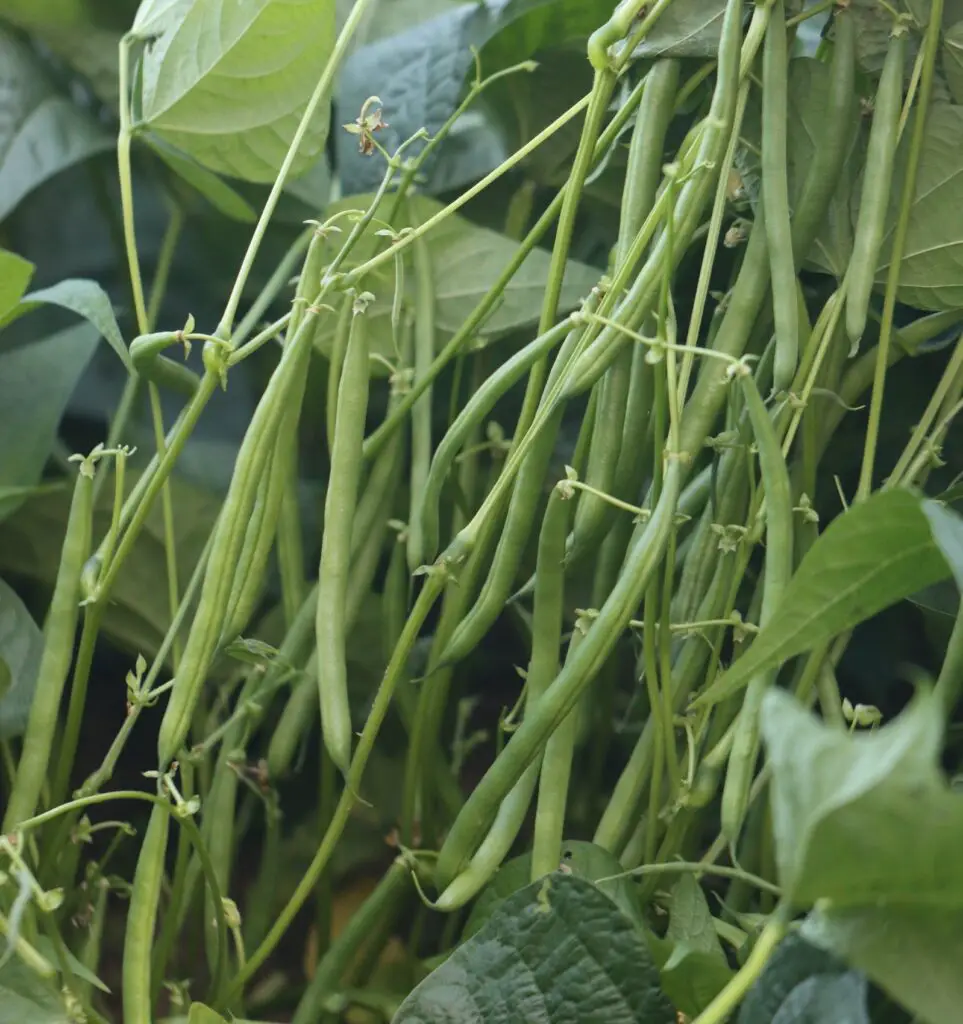
Green pods, also called premature green beans, replace the location of the flower where seeds get mature. Green beans’ endosperm is missing, which is usually available to provide nourishment to the seed. The lower and upper lobes, which mature into seeds, get their nourishment from the ovary, which encloses them.
3. Picking Green Beans
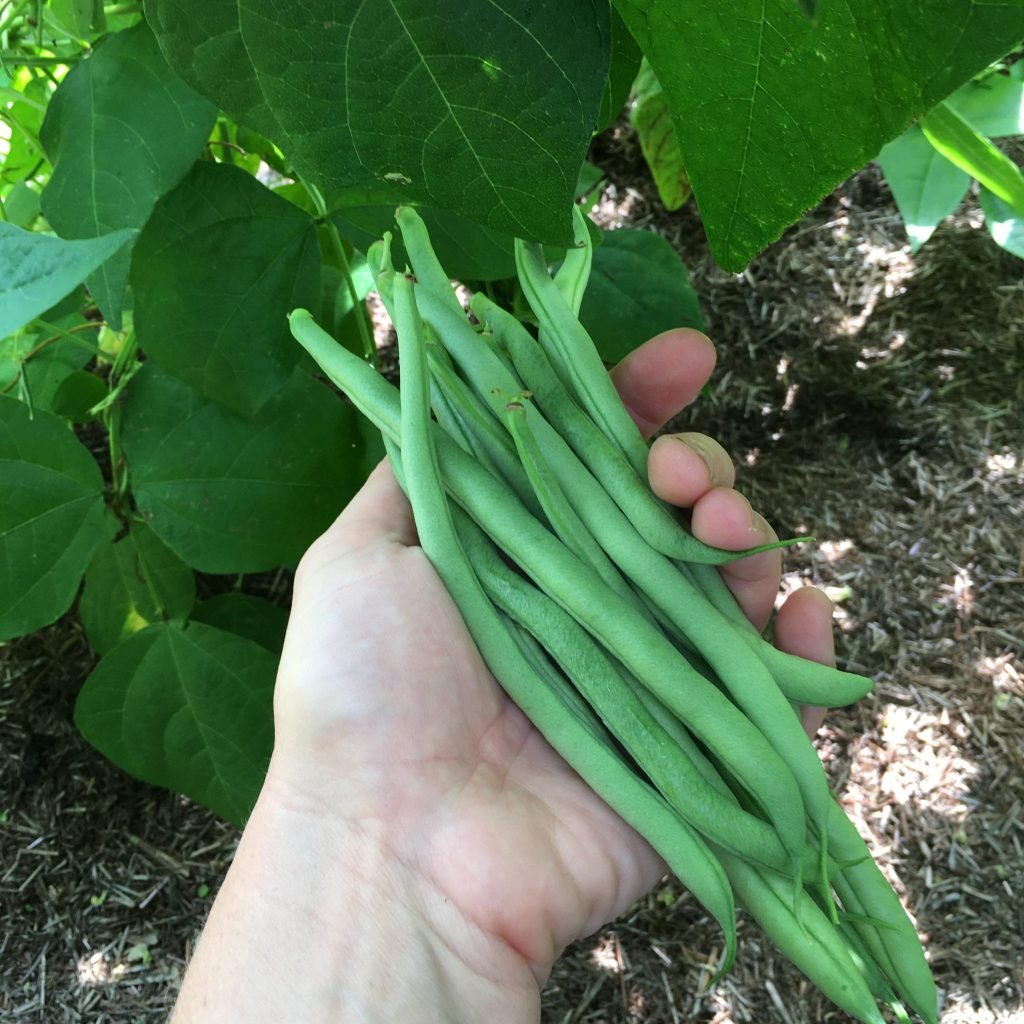
When the green pod grows to a length of 20cm, that means now, you can pick green beans. For confirmation, check the seeds of the green beans while picking. If they are soft and spongy in texture, that means they are good for a vegetable. When they grow to this size, just harvest the green beans and enjoy them in salad or vegetables.
Caring Tips For Green Beans
1. Temperature
Green beans love the sun and lots of water while growing. While planting them in the pot, make sure that your soil is warm. If you are thinking of directly sowing the seeds in the garden, then make sure to prepare the soil before sowing and let the soil get warm on the day you are thinking of sowing. So, the best time for sowing that will help maintain the temperature is right after sunset.
2. Fertiliser
Every plant has its nutrient requirement. Green beans are a fan of nitrogen content along with some phosphorus and carbon. To fulfill the requirements of micro and macronutrients, regular spraying of fertilizer is a great option. Ammonia-rich fertilizer is the best choice in this case.
3. Water
As we know, the sun and water are our favorite green beans. While planting the seeds in the soil, watering of soil is mandatory. You have t start watering the soil one week before sowing. And after sowing the seeds, water the plants twice a day. The best time to water the green beans is before or after the sun. In the sun, water evaporates, thus, depriving the plant of water and inhibiting its growth.
4. Weather
The hot and humid climate is a good option. Prefer Early June to sow the seeds, and this way, you can enjoy fresh green beans in July. If there are chances of frost, then avoid planting them. Green beans are unable to survive in frost, and all your efforts will go in vain. As an alternative, you can plant them in a pot.
5. Pests
Pests are a major concern while planting the plants, so the major concern while planting green beans are aphids, armyworms, and spider mites. The method by which you can keep these pests away from your garden is either via Sticky pads or with the help of liquid chemicals. Make sure to check the plant for any pests regularly. A little negligence can destroy your hard work. You can remove pests physically if you detect them early.
6. Companion Plants
For better development, companion plants are the best; they even help in protecting the plant from pests. The major selection of the companion plant depends on the area and the need. If you are choosing the plant to occupy the space, then go for Mint, Cilantro, and Celery.
Whereas to avoid pests, the best option is Eggplant, Ginger, and Catnip. On the other hand, Squash, Spinach, and Lettuce are the plants that can help maintain the temperature of green beans. With the help of companion plants, you can use natural mechanisms to increase the yield and maintain other factors that influence the growth of the plant.
Through this, you will be able to protect and even promote the growth of your plant, which will also give you some more production as a result.
Conclusion
Green bean is a vegetable that you can grow directly in your garden. They are easy to grow and need lots of water, sunlight, and manure. They are very sensitive to frost, so make sure to plant them in the pot. While deciding on the plant type majorly depends on the area where they are going to be planted.
While sowing the seeds of the green beans, the major question that arises in everyone’s mind is when to pick green beans, but now this question seems easy. You have to observe the flower and green pods on the plant. When green beans grow around 20cm in length, then harvesting them is a good idea.
Pruning is another factor to focus on. If your plant is not, it will grow abnormally and even interrupt the growth of other plants growing in the surrounding areas.

